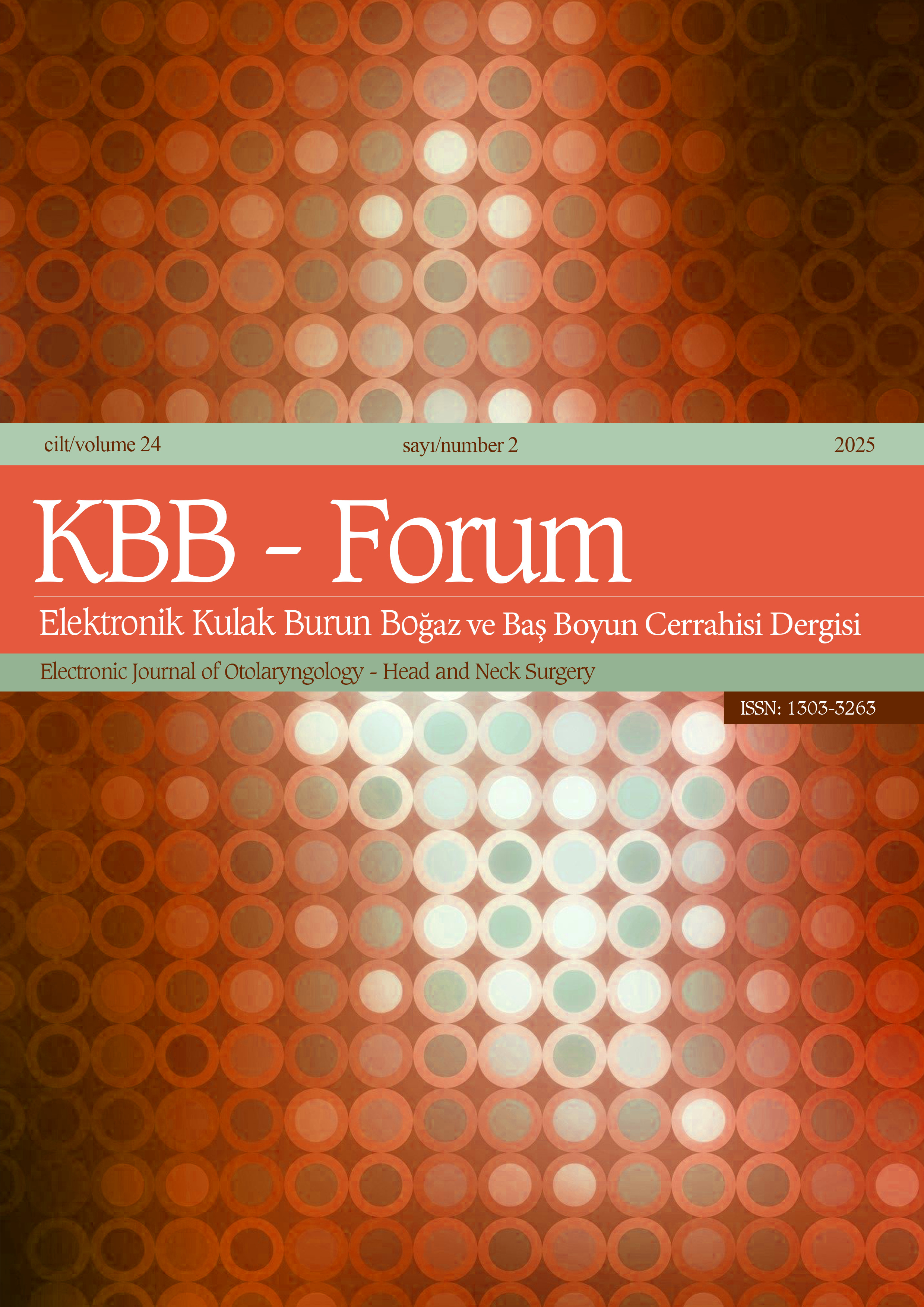NECK CUTANEOUS LEISHMANIASIS
1Şanlıurfa Eğitim ve Araştırma Hastanesi, Deri ve Zührevi Hastalıkları, Şanlıurfa2Harran Üniversitesi Tıp Fakültesi, Tıbbi Mikrobiyoloji Anabilim Dalı, Şanlıurfa
3Şanlıurfa Eğitim ve Araştırma Hastanesi, Tıbbi Patoloji, Şanlıurfa
4Harran Üniversitesi Tıp Fakültesi, Enfeksiyon Hastalıkları Anabilim Dalı, Şanlıurfa
5Harran Üniversitesi Tıp Fakültesi, Çocuk Hastalıkları Anabilim Dalı, Şanlıurfa Aim: Lesions in cutaneous leishmaniasis (CL) commonly occur in uncovered areas of the body, such as the head and neck. CL, one of the major mimicking diseases, should be considered in the differential diagnosis of neck lesions, and laboratory methods should be used to confirm the diagnosis in suspected cases. The aim of this study is to examine the clinical features, diagnostic methods, and treatment options of CL localized to the neck. To the best of our knowledge, there has been no prior study in the literature specifically evaluating neck involvement in CL.
Material and Methods: This retrospective study included 81 patients with CL lesions exclusively on the neck, diagnosed between September 2018 and October 2024 at the Diagnosis and Treatment Center for Oriental Boil in Şanlıurfa, an endemic region for CL. Clinical and demographic characteristics of the patients were retrieved from their medical records.
Results: Of the patients, 74% were male, and 26% were female. The mean age was 20.59 ± 15.86 years, and the majority (63%) were in the pediatric age group. Acute CL was identified in 66 patients, while 15 patients had chronic CL. The mean lesion duration was 11.56 ± 0.79 months. Solitary lesions were present in 63% of the patients, whereas 37% had multiple lesions, with a mean lesion count of 1.8. The mean lesion diameter was 14.38 ± 3.05 mm. The lesion types, in order of frequency, were nodulo-ulcerative, nodular, and papular. A total of 98.8% of patients responded to intralesional meglumine antimonate (ILMA) treatment, while the remaining one patient required systemic meglumine antimonate (MA) therapy.
Conclusion: Clinicians in endemic regions should always consider CL in the differential diagnosis of various types of neck lesions. ILMA is a highly effective treatment for neck CL.
Keywords : Cutaneous leishmaniasis, intralesional meglumine antimonate, neck



